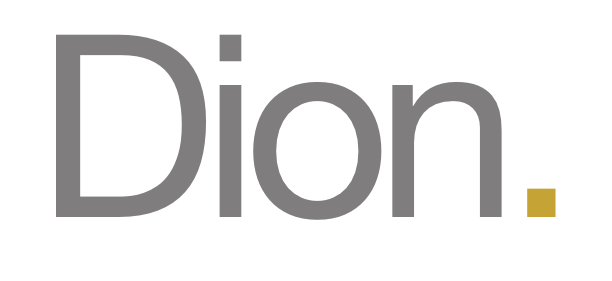But Wilkinson also saw that his appointment offered an opportunity—to both fix broken functions, such as HR, and create new ones, such as quality assurance, that could improve his region’s performance. He developed a plan of action that would involve laying off the top two tiers of managers—about 20 people—and asking them to reapply for their jobs. “You want the elements of your vision to take shape before you start,” Wilkinson explains. “In my case, I was redefining the role of the regional office as a true service center, and managers got the message.”
Most executives know what their next project or promotion will be well before the day it starts, but too few take advantage of their insider status and the time beforehand to prepare well. That is an opportunity lost.
Your next assignment is your next chance to create results—for your organization and for your career. A smart investment of time and effort up front can make the difference between simply getting by and truly excelling, between a dead-end move and a stepping-stone to bigger and better things.
A key factor in your transition will be knowledge—not only substantive information about the project or field, but an understanding of how others inside and outside the organization have tackled similar assignments, what challenges and opportunities lie ahead, and what resources are available and how you can mobilize them to overcome obstacles. Combining insights from our ongoing study of how knowledge is best captured and shared, our experience with consulting and executive search clients, and interviews with successful leaders across different types of enterprises, this article identifies three practical steps for building your knowledge capital to excel in new roles throughout your career. We call them phase zero, learning tour, and affinity groups.
Wilkinson used all three to implement his plan, reinterviewing staff members and translating his network of former peers—the national directors—into a source of feedback. This enabled him to upgrade the HR leadership, add a director of quality, and rapidly fill open positions. Let’s look at each step in detail.
Phase Zero
This is a chance to use your insider advantage to become familiar with a new unit’s people and performance and to discern the opportunities and challenges of your assignment—before it begins or is even announced. In the weeks leading up to the assignment, carve out and hold sacred at least 30 minutes a day to prepare. You may find ways to increase effectiveness, reduce costs, or even reassess a business model. In phase zero you can identify problems and develop a hypothesis for how to solve them—as Wilkinson did in southern Africa. And your solutions can be tested and adjusted as you move into your new role.
Among the likeliest places to look for objective data in this step are company documents—such as performance reviews and reports on services and operations—and feedback from customers and suppliers. For qualitative input, turn to colleagues who have supervised the role, interacted with it, or previously filled a similar role. Push to understand the story behind the story—for example, ask “What challenges might I encounter that aren’t apparent from the description of the assignment?” Finding these people and getting the information you need, without fanfare, will help you understand expectations and possibilities, think through a plan of action, and prepare personally for the transition.
Consider the experience of Todd Hoddick, who in early 2011 became vice president of the North American entertainment division of Barco, a global visual solutions company based in Belgium, in January 2011. Having joined the firm in 2008 as vice president of digital cinema in North America, Hoddick had developed a strong reputation for building a profitable single-business unit. In 2010 he was approached for the new position, which would add rental and staging, digital signage, home cinema, image processing, and corporate audiovisuals to his plate.
It would be a big leap. “I wanted to understand the challenges of the role I was about to assume compared with what I was already handling,” Hoddick told us. He began gathering information from a colleague then in the role who would be moving to another position, as yet unannounced. “He and I were in similar strategic meetings for the company, so I was able to ask questions about the business without seeming odd,” Hoddick said. He learned, for example, that the division had significantly streamlined the sales force while maintaining ambitious revenue targets.
His next stop was Barco’s worldwide head of sales, to whom he would be reporting. Hoddick had one pressing query: “What constitutes success, and what do you expect me to accomplish that others haven’t been able to?” The answer: “Help Barco to be the number one projection company in the world.” That clearly meant more travel and some long hours up front. So Hoddick spent time preparing his family for the change and getting their support for his additional responsibilities.
Learning Tour
Phase zero involves solitary study and under-the-radar conversations. The learning tour involves systematic dialogue with the people who can help you do your new job, including direct reports, suppliers, and customers. You’ll be testing your definitions of problems and your hypotheses for solving them, identifying leverage points, building relationships, and tapping into diverse perspectives to help you understand how to energize support and convert opposition.
Hoddick’s learning tour started with a big meeting in Austin, Texas, where he asked key salespeople what they needed to be successful. The answer was less paperwork and a specific back-office resource: a jack-of-all-trades named Carlos who had been laid off during the recent retrenchment. Hoddick told them that he would fix both problems if the reduced sales force would commit to hitting its numbers. Six months later the group was ahead of plan.
You should use your change of role as an excuse to meet with all the important stakeholders—even those you already know. But remember that your “first 90 days” will differ from those of an external hire, because both your reputation and your biases are established. We recommend two tactics for making the most of this step: Be mindful of your reputation in the organization, reinforcing your positive attributes and acknowledging where you will need help. And approach your team members and their ideas with an open mind. Ask inclusive, open-ended questions, such as “If you could make one change in this area tomorrow, what would it be?”
Gary Chapman took a learning tour in early 2011, when he was promoted from vice president of field operations to executive vice president of the national network at Communities in Schools—a $225 million nonprofit singled out by the White House as one of the most effective youth mentoring organizations in the nation. “I had two sides to my new team,” Chapman recalls. “Field operations, where I had worked before, and research and evaluation [R&E, which audits field operations]. I had a lot of work to do to understand the latter.” Right away he met with staff members to learn about their responsibilities and what motivated them. “A number of people told me there was a disconnect,” he says. Audit teams worried that field teams weren’t learning from their research, and field teams thought they weren’t getting enough feedback and felt too busy to elicit it themselves. Although Chapman came from the field, he listened to both sides as an honest broker. He decided to introduce weekly meetings between field and R&E directors in an effort to promote collaboration.
He also reached out to the four other members of CIS’s executive team and realized that he could work more closely with communications, government relations, and the development team on advocacy and fundraising. “These teams needed more information on certain groups of students so that they could make our case on the Hill, with the right data at the right time, and plug us into education dollars we hadn’t accessed in the past,” Chapman says. He encouraged his field and audit staffs to engage with those colleagues as well—in effect taking his unit on a learning tour of the organization and giving everyone a chance to participate in change with an open mind.
Affinity Groups
Chapman’s initial check-in with other leaders on the executive team led to ongoing relationships that made him part of an internal network of influencers he hadn’t been able to reach in his prior position. Finding and staying in touch with colleagues who can sharpen your thinking and connect your role to your organization’s broader mission is essential not only to getting smart but also to staying smart in your new job. Many managers tap existing peer networks to share experiences, or get assigned to a working group on a specific initiative. But too few intentionally construct and hone support networks that will help them garner the skills and fresh ideas they need to succeed.
Two mind-sets can help you get the expertise and perspectives necessary for your new role: Be open to the idea that the affinity group you’re looking for may not exist—and if it doesn’t, then create it, either formally or informally. And recognize that the right affinity group at the start of an assignment may not be the right one over time; be willing to make changes to the composition of your internal network. Rather than asking yourself “Who can help me get this done?” as you did in your learning tour, continually ask “Whose perspectives will keep me on the right footing to advance my organization’s mission, and how can I connect with those people?” Your answers may lead you to other unit heads, former leaders, or even the board.
That’s exactly the question Austin Rothbard asked when he moved from vice president of strategy and business development for bowling and billiards at the leisure equipment company Brunswick to president of its Cabo Yachts division, which makes premium boats for sport fishing. His answer—after pre-assignment preparation that included fishing trips, dealer visits, and a switch from business attire to khakis and boat shoes—was to become familiar with dealer networks and create ties to the two founders of the business, who had sold it to Brunswick and were three weeks from the end of their contractual obligations. Staying in touch with those two men was critical, because dealers had great respect for them and because they continued to be innovative and bold. “As long as I could keep the founders involved,” Rothbard says, “especially since I was limited in what I understood, we were able to build the best boat in the business.”
Rothbard also connected regularly with the chief financial officer and the vice president for HR of Cabo’s sister company, Hatteras. They gave him advice about financial and personnel decisions at Cabo. “They were extremely willing to help me understand the business and make decisions about handling challenging employees,” he says. “They helped me grow as a leader.”
In a very different enterprise—Maine Medical Center, in Portland—Peter Bates, newly promoted to chief medical officer, built an affinity group of senior administrators, including the CEO and the board, and tapped their wisdom for a project that represented a huge bet for MMC: developing a medical school to strengthen the hospital’s talent pipeline.
“I had to understand the board’s needs and interests and ground the vision in a progression of strategies that people could agree to,” Bates told us. Ultimately, the CEO and key directors became passionate advocates, and the vision resulted in a partnership with the Tufts University School of Medicine, in Boston, to build a branch campus at MMC. Bates also helped create a network of community hospitals, which provide innovative educational experiences for medical students, including up to nine months in a rural facility during the third year. Throughout, he has continued to see patients, which keeps him connected to the front line. “I still practice one day a week,” Bates said. “Others see that I’m not just a guy in a suit. I walk through the hospital and make myself accessible.”
Phase zero, learning tours, and affinity groups can help any manager prepare for the next promotion and keep learning and growing in the job. Sometimes the steps neatly follow this sequence, and sometimes they don’t. An existing affinity group may inform your approach to phase zero, for example, or an inflection point in the job may become a good excuse to take a renewed learning tour. Whatever their order, these steps are critical for role changers who want to have greater impact in their organizations—and greater success in their careers.





